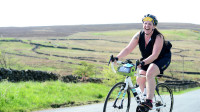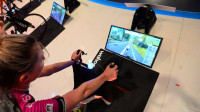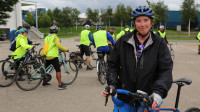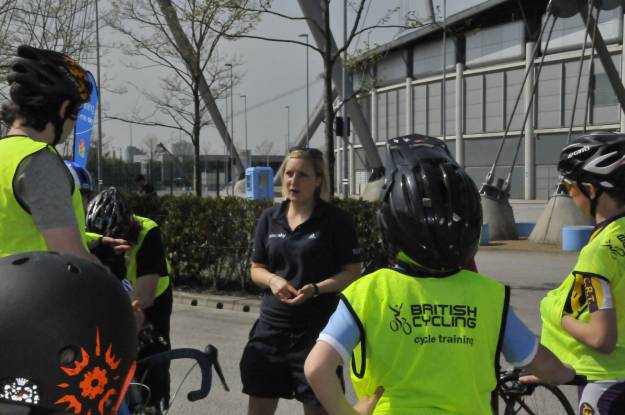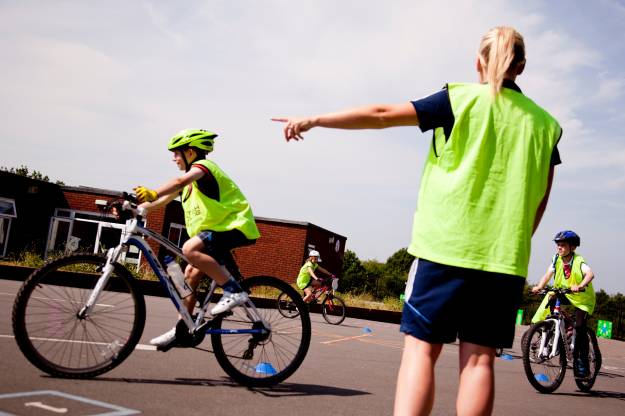![]() Follow britishcycling.org.uk on
Follow britishcycling.org.uk on ![]()
![]()
![]()
![]()
Bitesize Bikeability: Part 1: Side Roads and Parked Cars
Bikeability is Cycling Proficiency for the 21st century, teaching the skills to ride confidently and safely on today's roads. In this series of articles we'll look at some of the key concepts introduced on a Bikeability course, and show you some of the resources used on our National Standard Instructor Training Courses. These articles are not intended to replace Bikeability training, but hopefully will give you a taste of what might be covered on a course.
How to Handle Side Roads and Parked Cars
Most cyclists who use residential or urban streets will often come across side roads or parked vehicles. Even those who train or ride on rural roads will often pass side roads. Many cyclists invite conflict by riding too close to potential hazards, and will make their journeys less enjoyable by doing this.
Common Mistakes
Side Roads

Above: Riding away from the junction mouth, controlling the lane.
Riding too close to the edge of the road causes the following problems:
- The rider is not visibible to traffic turning out of the side road
- Encouraging following traffic to overtake and potentially turn across the riders path
Not looking ahead and into the side road causes the following problems:
- Not looking for vehicles (including other cyclists) likely to turn right across your path
- Not look for vehicles (including other cyclists) rolling out the side road trying to see down the main road
- Not being alert for pedestrians crossing the junction into your path
Parked Cars

Above:Avoiding the possible door zone around a parked vehicle.
Passing too close to parked vehicles can cause the following challenges for cyclists:
- Pedestrians crossing between vehicles may step into the road for a clearer view
- A driver or passenger may open the car door suddenly into the riders path
- The parked vehicle may set off suddenly, swinging out to pull away into the rider's path
Top Tips
For both manouevres the best guidance to follow is "be predictable, and be where a car would be". Drivers are looking for other vehicles and are used to dealing with other vehicles, so try to act like any other vehicle would.
It is important that you are confident and assertive, taking control of the situation. A confused or nervous driver is a dangerous driver, so take charge for them.
- Allow plenty of space when passing parked vehicles or side roads
- When passing parked vehicles look ahead for oncoming vehicles- especially if you need to pass onto the opposite side of the road
- Look for potential hazards developing all around you, but particularly ahead
- Make eye contact with drivers of vehicles around you- this helps ensure drivers have seen you and know you are in control
- You do not need to signal for either of these maneuvers- keep your hands covering the brakes ready to control your speed if needed
- Be aware of pedestrians crossing into the road and other cyclists- look as well as listen
- If in doubt stop safely to the side of the road and assess the situation
More Information
The best way to improve your on road cycling skills is through completing a Bikeability course. These are available free to most young people through schools, and in certain areas training for adults is also free.
To find your local Bikeability scheme visit www.bikeability.org.uk
If you would like to train as a Cycle Training Instructor to deliver Bikeability courses more information on British Cycling's Instructor courses is available here.
If there is an on road manouevre you'd like us to look at in more detail in a future article please contact cycletraining@britishcycling.org.uk with your suggestions.

